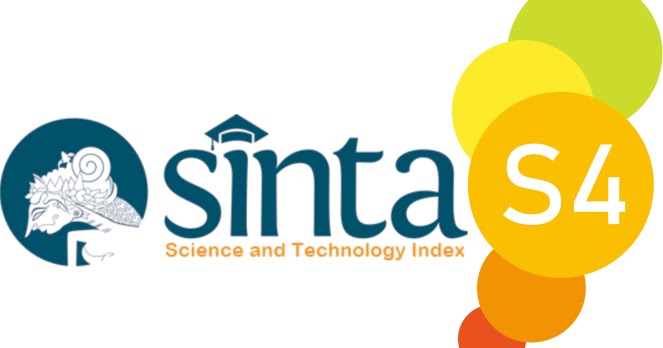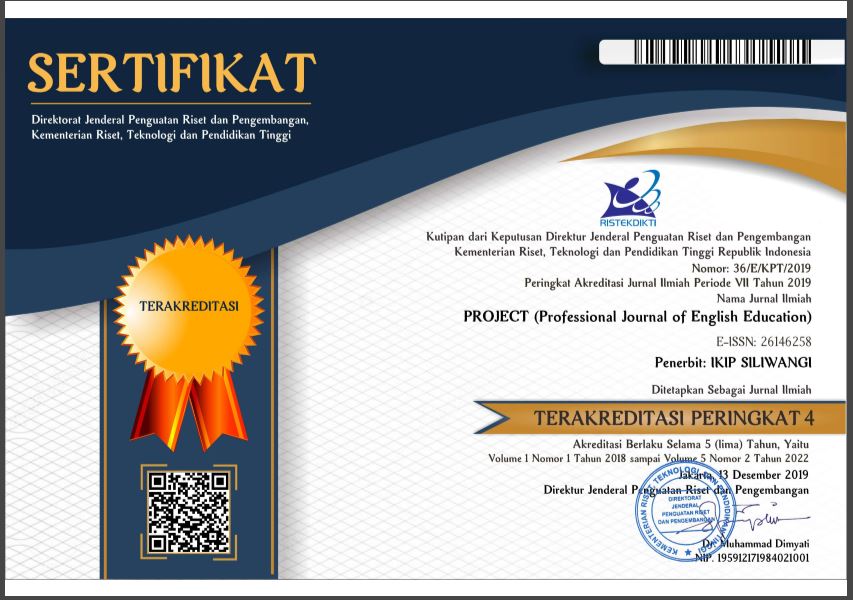Investigating EFL Students' Self-Efficacy in Teaching Practicum
Abstrak
This research is designed to explore students' self-efficacy level during teaching practicum as well as the factors that affect the ratings. The researchers implemented mix method by combining quantitative and qualitative to address the inquiry. The participants consisted 33 EFL students from one of private universities in west Kalimantan. The results demonstrate that EFL students' self-efficacy level during teaching practicum is in the moderately high to very high category. It is indicated by the results of the questionnaire, which shows that the strength dimension has the highest score of 3.60 (very high), the generality dimension with a score of 3.40 (slightly high), and the magnitude dimension with a score of 3.0 (slightly high). Additionally, the elements influencing students' self-efficacy include mastery experience, vicarious experience, verbal persuasion, and psychological arousal.
Referensi
Almeida, F. (2018). European Journal of Education Studies Strategies to Perform a ixed Methods Study. European Journal of Education Studie, 5(1), 137–151. https://doi.org/10.5281/zenodo.1406214
Bandura, A. (1997). Self-efficacy in changing societies. Cambridge university press.
Cania, M., Kusriandi, W., & Dwiniasih, D. (2024). Efl Pre-Service Teachers’ Self-Efficacy Beliefs During Teaching Practicum. IJIET (International Journal of Indonesian Education and Teaching), 8(1), 88–100. https://doi.org/10.24071/ijiet.v8i1.5051
Dolgun, H. & Caner, M. (2018). Self-efficacy belief profiles of pre-service and in-service EFL teachers. Mehmet Akif Ersoy Üniversitesi Eğitim Fakültesi Dergisi I, 48(4), 602–623. https://doi.org/10.21764/maeuefd.335597
Gan, Z. (2013). Learning to teach english language in the practicum: What challenges do non-native ESL student teachers face? Australian Journal of Teacher Education, 38(3), 92–108. https://doi.org/10.14221/ajte.2013v38n3.3
García-Noblejas, B. P., Barceló-Cerdá, M. L., Rodríguez-Gómez, I., & López-Gómez, E. (2023). Exploring Student Teacher Perceptions on the Benefits of the Teaching Practicum. Journal of New Approaches in Educational Research, 12(2), 242–257. https://doi.org/10.7821/naer.2023.7.1384
Li, M., Kuang, F., & Dan, W. (2023). Exploring the Characteristics of Pre-Service EFL Teachers’ Practicum Experiences: a Complexity Theory-Based Case Study in China. Asian-Pacific Journal of Second and Foreign Language Education, 8(1). https://doi.org/10.1186/s40862-023-00187-4
Liu, C., & Chen, M. (2022). A Genre-Based Approach in the Secondary School English Writing Class: Voices from Student-Teachers in theTeaching Practicum. Frontiers in Psychology, 13(September), 1–15. https://doi.org/10.3389/fpsyg.2022.992360
Mehmood, N. (2019). Factors Impacting EFL Teachers’ Self-efficacy: A Theoritical Perspective. English Language Teaching, 12(4), 39. https://doi.org/10.5539/elt.v12n4p39
Nugroho, H. A. (2017). Pre-Service EFL Teachers’ Self-Efficacy, Their English Proficiency and Their Preparedness for Teaching Practicum Program. 2, 1–11.
Sari & Krismiyati. (2021). Exploring Source of Self-efficacy of Informatics and Computer Engineering Teacher Education Students during their Teaching Practicum. International Journal of Active Learning, 6(2), 100–110.
Suhandra, I. R., & Ariawan, S. (2023). Exploring EFL Studet Teachers’ Experience on the Roles of Teacher Mentors During Teaching Practicum. JOLLT Journal of Languages and Language Teaching, 11(4), 901–911. https://e-journal.undikma.ac.id/index.php/jollt
Weerakoon, S., & Careemdeen, J. D. (2023). The Dynamics of University-School Partnerships in Teacher Education Practicum: A Comprehensive Analysis and Framework for Successful Implementation. Asian Journal of Education and Social Studies, 49(4), 505–514. https://doi.org/10.9734/ajess/2023/v49i41228





